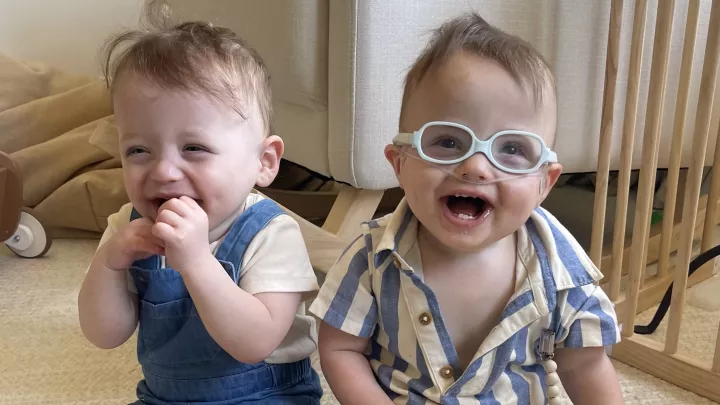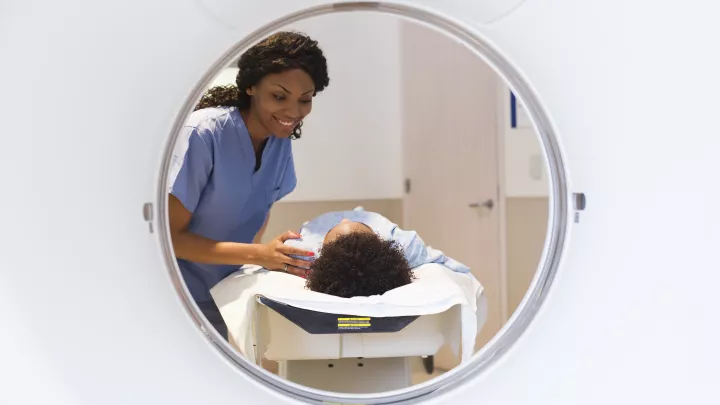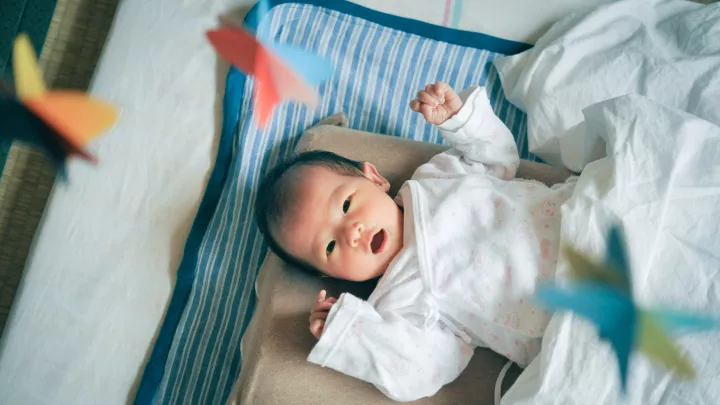Management of Bronchopulmonary Dysplasia
Our team takes care of each aspect of your child’s health, with a focus on caring for the lungs. We work as a coordinated team and prioritize the needs of your child and family during this challenging time. You can find new hope and treatment options from our experts at Children’s Hospital Los Angeles.
Bronchopulmonary Dysplasia Diagnosis and Breathing Evaluations
We perform advanced evaluations in the Newborn and Infant Critical Care Unit (NICCU) and Bronchopulmonary Dysplasia Clinic. Our team diagnoses the severity and cause of bronchopulmonary dysplasia. We check for other conditions that may also affect your infant’s lungs. We assess your child’s overall health to make sure we provide complete and cohesive care.
We make sure your child feels as comfortable as possible during tests, which may include:
- Airway evaluation
- Blood test
- Chest X-ray
- Echocardiogram
- Radiology and imaging tests
- Sleep study
- Swallow evaluation
Infant sleep studies
Infant sleep studies provide in-depth assessment and help us plan safe discharge of your child from the hospital. This test also give us detailed information about what kind of breathing support your child needs, whether in the hospital or at home.
We offer sleep studies in our accredited Sleep Lab to determine your child’s ability to maintain appropriate oxygen levels and assess the need for supplemental oxygen and also check for sleep apnea (when breathing stops and starts).
Our BPD pulmonologists (lung doctors) analyze your child’s breathing patterns alongside sleep medicine specialists who reads these studies. We have the unique expertise and advanced technology necessary for these tests.
Bronchopulmonary Dysplasia Rounds in the NICCU
Our program’s expert neonatologists and pulmonologists lead weekly meetings at your child’s bedside. These meetings, called BPD rounds, keep your child’s entire team on the same page.
BPD rounds include your family when possible, along with your child’s Infant Chronic Lung Disease Program team:
- Bedside nurse
- Inpatient nurse care manager
- NICCU pulmonologist
- Neonatologist
- Physical, occupational, and feeding therapists
- Registered dietitian (nutritionist)
- Respiratory therapist
- Cardiologist (as needed)
Infant Ventilator Care in the NICCU
A ventilator is a machine with a tube that helps your child breathe. Your child may also receive gases through this machine, including oxygen or nitric oxide.
Babies with severe BPD need unique ventilator care and settings individualized to their lungs. Our specialists are among the few BPD ventilator care experts in the country.
Optimizing ventilation and oxygenation
Our experts find the optimal ventilator settings for your child. We identify how large of a breath your child needs, for how long and how often. The right balance helps your child breathe comfortably and helps the lungs grow while minimizing injury from the ventilator.
Expert ventilator care makes a significant difference in the health and development of your child. Some children need sedation (medications to keep them calm or asleep) while on a ventilator. But with the right ventilator care, many children can comfortably stay awake. Being alert also allows your child to eat better and engage in therapy, such as massage or movement.
Personalized Treatment for Bronchopulmonary Dysplasia
We create a treatment plan specifically for your child and your child’s diagnosis. Our specialists involve your family in the care of your child and treatment decisions every step of the way. Your child can receive treatment in the hospital and after discharge at our outpatient Bronchopulmonary Dysplasia Clinic.
Noninvasive ventilation
We tailor breathing support to your child’s needs, often managing less severe BPD with noninvasive ventilation. Noninvasive ventilation provides breathing support through a nasal cannula (two prongs that go into the nostrils) or face mask instead of a breathing tube.
If your child’s health allows, we may use noninvasive ventilation from the start of treatment. Otherwise, as your child’s lungs grow and develop, we may transition from using a ventilator to a noninvasive option.
Surgical expertise
Our skilled surgeons may perform procedures to assess and optimize how your child is able to breathe and eat. If your child needs a ventilator to help with breathing at home, we may do a tracheostomy. This procedure creates an opening in your child’s windpipe. Your child may also need a feeding tube to get food into the stomach at home.
Medication management
Our team has extensive knowledge about a variety of medications. At the forefront of care and research, we safely use the latest treatments available. We offer several types of medication to keep your child’s lungs and airways working well. We may also use medications to support your child’s heart and digestion.
Developmental therapies and nutrition
We focus on supporting your child’s growth and development with therapy and nutrition. Your child will breathe better with a stronger body and lungs.
We provide:
- Physical and occupational therapy: Physical and occupational therapists work to improve your child’s comfort and brain development. They stretch and move your child in specific ways to reduce stiffness and stimulate the brain.
- Feeding therapy: Feeding therapists assess swallowing skills and help your child learn how to swallow and eat safely. They oversee a safe transition from feeding tubes to eating by mouth, if needed.
- Nutrition: A registered dietitian helps optimize your child’s growth. Proper nutrition supports your child’s lungs, development and overall health. We make sure your child gets the nutrients needed through the right formula, food and feeding schedule.
Access to Additional Care at CHLA
Our team works closely with other specialized programs at Children’s Hospital Los Angeles. If necessary, we may connect your child with experts from other programs, including the:
- Aerodigestive Program
- Heart Institute
- Newborn Follow-Up Program
- Extracorporeal Membrane Oxygenation (ECMO) Program
Home ventilation program
We aim to get babies home with their families as soon as possible. Some babies need continued breathing support even once they are otherwise stable and ready to go home. Our Home Mechanical Ventilation (HMV) Program allows your child to safely leave the hospital with at-home breathing support. CHLA has one of the largest HMV programs in the world. Our goal is unite even our sickest patients with their families who otherwise would not be able to leave hospital soon enough. We have dedicated team of experts who work by empowering families with knowledge, support and training.
We figure out the right time to switch to a home ventilator to make sure your child leaves the hospital safely. Before discharge, we empower you with the medical tools and knowledge you need to care for your baby at home, including an in-depth training program. Our specialists also give you the supplies you need, such as medications, oxygen and equipment.
What to expect at home
Once home, you have a virtual visit with your child’s lung doctor within 48 hours. You also have access to a health care provider 24/7. You follow up with us in-person after you’ve been home for two weeks.
The program’s dedicated pulmonologist and nurse offer guidance throughout the process. They coordinate closely with home nurses, medical equipment providers, payers and your child’s pediatrician.
Infant Chronic Lung Disease Program at Children’s Hospital Los Angeles
We provide seamless, multispecialty care that involves your family every step of the way. Find out what we offer after your child leaves the hospital at our Bronchopulmonary Dysplasia Clinic.


